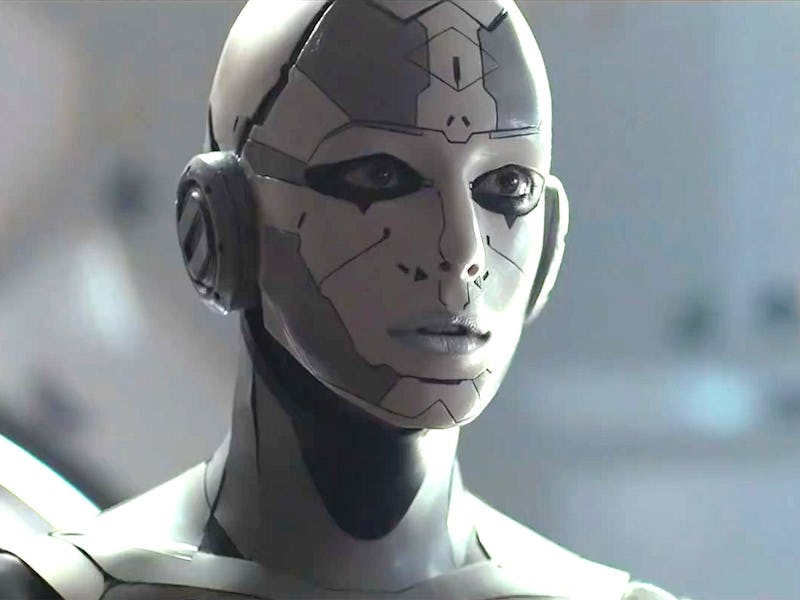You need to watch the best indie sci-fi movie on Amazon Prime ASAP
The twisty, underrated sci-fi drama Archive is low-budget filmmaking at its finest.

The original movie robot was the False Maria from Fritz Lang’s 1927 classic Metropolis, created to imitate a real person and designed to lie and mislead people.
From Fritz Lang’s template, robots have become harbingers of man’s obsolescence as well as mirrors into our own souls, in everything from Avengers: Age of Ultron to Marjorie Prime. For writer-director Gavin Rothery, the seeds for his feature filmmaking debut were planted once his two computers broke down during spring cleaning.
A freelancer, Rothery relied on his computers like an Uber driver depends on their car. “I just felt like these computers had done it on purpose, as if they were trying to spite me,” he later explained, describing the situation to YouTube channel Bags of Action. “I had this idea of my computers basically committing suicide, to spite me.”
Rothery eventually built out the world of Archive, which portrays several philosophical battles between man and machine. In the background, a corporate war plays out between the advanced artificial intelligence company employing the film’s protagonist George (Divergent’s Theo James) and a company that allows the consciousness of the recently deceased to temporarily communicate through existent video and phone chats. This process is called “archiving.” At the forefront of Archive is Gavin’s struggle to secretly merge these two technologies.
Rothery places Gavin in extreme isolation as he works, with only robots to keep him company. Previously a lead concept designer on Duncan Jones’ 2009 sci-fi Moon, a critically acclaimed story about a character living in total isolation with a robot companion, Rothery had experience with this premise going in. He’d also directed the intro cinematic for Titanfall, a 2014 video game in which the relationship between human and robot plays a central role.
The relationships between man and machine, however, are more varied in Archive. Rothery offers a sort of family structure to his characters. Within an isolated compound in the gorgeous mountains of Japan (the film was actually filmed in Hungary), George has essentially built two and a half robots. There’s the gigantic and boxy J1, a childish toddler; the more adolescent teenager J2, who looks like an ASIMO; and the half-built J3, an adult woman who looks the part.
Archive.
Both J2 and J3 are portrayed by Nymphomaniac’s Stacy Martin, who pulls triple duty by also playing George’s dead wife, Jules. Against her wishes, George has archived Jules after a freak car accident took her life, working to bring her back to life in some capacity.
As previously demonstrated on Moon and certainly reaffirmed in Archive, Rothery has a sharp eye for worldbuilding. He once told D Magazine that his earliest influences were Luke Skywalker’s landspeeder on Tatooine and a bookshelf distinguished by the colorful covers of sci-fi books, saying, “I wondered what was going on in those places.”
There’s a very lived-in feeling to the world of Archive, as the compound’s technology is constantly on the fritz. George’s project is threatened by his boss Simone (Rhona Mitra, best known for playing Mercy Graves on Supergirl) as well as the Archive company’s henchman (the always welcome Toby Jones).
Archive’s robots can be defined by their visible lines. Thick safety markers denote the scene-stealing J1, while thin contours elegantly shape J1’s face. Rothery is able to tell the story of George’s various creations through these details. But a large question emerges as the movie continues: what is George’s plan? He clearly cares for each of the robots like a father, but he’s also an inattentive parent. Particularly, George fails J2 again and again, as the robot becomes horrified by the perception that George is building J3 as her replacement.
Archive.
J2 is right, of course. George spends much of the movie trying to navigate this family he’s constructing for himself, mediating fights between robots he’s designed to meet various stages of human development. While all his research has been leading up to the creation of J3, what happens to the rest of the family he’s made along the way when her engineering is perfected?
A sense of mystery pervades Archive, as it’s unclear whose actions will truly drive the story forward. Rothery works very well in this space, creating a stylish drama with a cast whose chemistry reacts in a variety of ways.
Archive resolves its biggest tensions through a major twist, one that makes sense within the movie’s world but also drastically changes our perception of its story. Archive digs into questions of what makes a family unit, who has power within that unit, and how the world can come crashing down around them as that power is renegotiated.
Archive is now streaming on Amazon Prime in the U.S.
This article was originally published on